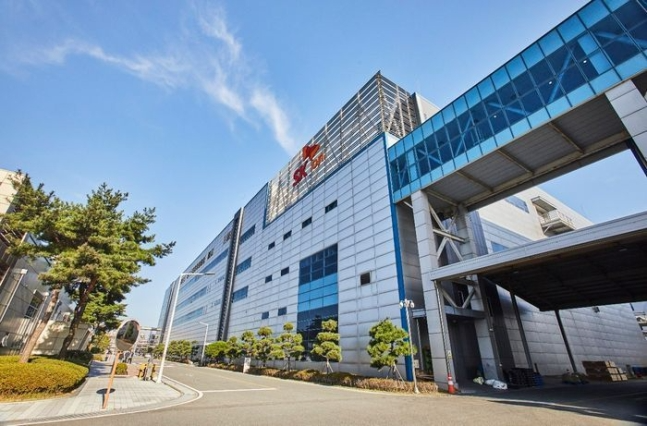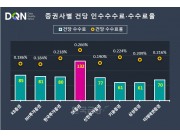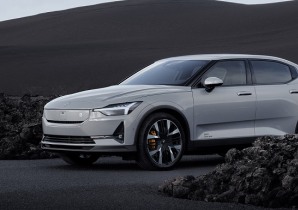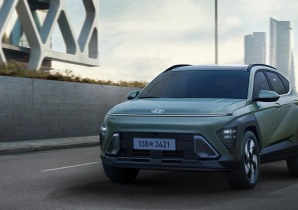
Lee Seok-hee (left) and Lee Yong-wook, CEOs of SK On, who transitioned to a two-CEO system this year. / Photo=SK On
이미지 확대보기However, while Samsung SDI and LG Energy Solution are strengthening product diversification and domestic production—a key evaluation factor—SK On remains relatively quiet. Some in the industry voice concerns that SK On could fall behind not only in this bidding competition but also in the broader ESS transition.
According to the industry on November 19, Korea Power Exchange issued a bidding notice for the second ESS central contract market on November 17 and disclosed the operator selection criteria. The project involves installing approximately 20 GW (gigawatts) of ESS by 2038 across 11 phases, with a total scale of approximately KRW 40 trillion.
In the first round of bidding worth approximately KRW 1 trillion conducted in the first half of the year, Samsung SDI won with 79% of the order volume. LG Energy Solution captured the remaining 21%, while SK On suffered the humiliation of not securing a single order.
Samsung SDI won the bidding war with ternary NCA batteries, unlike competitors who primarily used LFP batteries, which are most commonly used in ESS. NCA batteries have higher energy density and efficiency compared to LFP batteries.
Although structurally more prone to fire risks, Samsung SDI enhanced safety by applying its module-integrated direct spray fire suppression technology "EDI" and thermal propagation prevention technology "No TP." Despite the higher manufacturing cost of NCA batteries, Samsung SDI took the gamble of lowering its delivery price.
Additionally, the company reportedly received high scores in "industrial and economic contribution," which accounts for the highest proportion among non-price indicators. This section evaluates synergies in Korea's battery production ecosystem, and at the time of the first round bidding, Samsung SDI was the only company with an ESS battery production base in Korea. Moreover, unlike LFP batteries, which rely mostly on Chinese raw materials, NCA batteries have a higher proportion of Korean-made materials.
The second round bidding project scale is similar to the first round at approximately KRW 1 trillion. However, there have been changes in evaluation indicators. The proportion of non-price indicators such as safety and domestic ecosystem synergy mentioned above has increased to 50%. For this reason, forecasts suggest that Samsung SDI, which proved its price competitiveness in the first round, will also be advantageous in the upcoming second round bidding.
LG Energy Solution and SK On, which left disappointments in the first round, must restore their pride in the second round. However, while SK On has confirmed domestic ESS production, there are questions about future volume response. This differs somewhat from competitor Samsung SDI expanding its lineup to include LFP while maintaining existing strengths, and LG Energy Solution confirming domestic production and emphasizing mass production capabilities.

A full view of the SK On Seosan plant. / Photo=SK On
Particularly, LG Energy Solution, in a similar situation, held an "ESS LFP Battery Domestic Production Promotion Ceremony" at its Ochang Energy Plant together with North Chungcheong Province on November 17, the day of the ESS bidding briefing, introducing plans to strengthen the domestic energy industry ecosystem and technology cooperation. This is a move to secure non-price factor competitiveness in the second ESS bidding war.
LG Energy Solution plans to begin production line construction at the end of this year and commence full-scale operation from 2027. Initial production will start at 1 GWh scale, with plans to gradually expand production scale according to future market demand. The company will also work concurrently on efforts to develop Korea's LFP battery ecosystem for materials, components, and equipment.
The company began producing ESS LFP batteries at its Nanjing, China plant in 2024, and started product manufacturing at its Michigan, U.S. plant in June this year. LG Energy Solution plans to transplant this "success experience and know-how" directly to its Ochang Energy Plant to develop Korea's ESS industry ecosystem.
SK On is known to be pursuing ESS battery production in Seosan, South Chungcheong Province. However, specific line construction plans have not yet been disclosed.
Additionally, there are criticisms that SK On's ESS transition is lagging behind competitors as poor performance persists. SK On achieved a surprise profit in Q3 this year, but accumulated operating losses for the year reach KRW 490 billion. SK On recently decided to merge with SK Enmove, a profitable affiliate within the group, but maintains a conservative stance regarding ESS transition and related investments.
Jeon Hyun-wook, SK On's Financial Support Division Head, stated regarding ESS transition in an earnings conference call, "ESS transition is currently in the discussion stage. As the ESS market is still in its early stages, we are focusing on minimizing investment scale and maximizing return on invested capital through an efficiency-centered strategy."
He added, "We are also leaving open the possibility of operating production bases in joint venture form and reviewing plans to establish optimal production systems by region."
However, some in the industry point out that SK On's approach could cause it to fall behind not only in the upcoming second round bidding but also in future ESS market competition. Battery and other order-based companies tend to aggressively expand facility investments to enhance production capacity and expand market share. Manufacturers sometimes engage in aggressive bidding, accepting losses to secure market share.
A battery industry official said, "This ESS bidding promoted by the government is a project that judges comprehensive competitiveness, including price competitiveness as well as mass production capability, safety, and contribution to the domestic industrial ecosystem," adding, "Companies that can demonstrate the ability to materialize such comprehensive plans will be advantageous."
Kim JaeHun (rlqm93@fntimes.com)



























![백종일 전북은행장·고병일 광주은행장 임기만료···외부 발탁 가능성↑ [2025 CEO 인사 전망 - JB금융]](https://cfnimage.commutil.kr/phpwas/restmb_setimgmake.php?pp=006&w=69&h=45&m=5&simg=2025111821292300767b4a7c6999c121131189150.jpg&nmt=18)
![[DCM] SK온, ‘배터리 살리기’ 총력…투심은 ‘혼란’](https://cfnimage.commutil.kr/phpwas/restmb_setimgmake.php?pp=006&w=69&h=45&m=5&simg=2025111822384808899a837df6494123820583.jpg&nmt=18)


![캄보디아 문제·예대금리차 1위···백종일 전북은행장, 경영 성과에도 연임 '불확실' [2025 CEO 인사 전망 - JB금융]](https://cfnimage.commutil.kr/phpwas/restmb_setimgmake.php?pp=006&w=69&h=45&m=5&simg=2025111900283301402b4a7c6999c121131189150.jpg&nmt=18)

!['38년 증권맨' 황성엽 "자본시장 중심 경제 나아가야 할 시점…튼튼한 연금제도 지원" [7대 금투협회장 후보 인터뷰]](https://cfnimage.commutil.kr/phpwas/restmb_setimgmake.php?pp=006&w=69&h=45&m=5&simg=2025111813374507832179ad439072115218260.jpg&nmt=18)
![생산적금융 임무 새 금투협회장…서유석·황성엽·이현승 3파전 [7대 금투협회장 선거 레이스 ③]](https://cfnimage.commutil.kr/phpwas/restmb_setimgmake.php?pp=006&w=69&h=45&m=5&simg=2025111811120602650179ad4390712411124362.jpg&nmt=18)
![금투업계 CEO들 각축전…역대회장 출신 면면은 [7대 금투협회장 선거 레이스 ②]](https://cfnimage.commutil.kr/phpwas/restmb_setimgmake.php?pp=006&w=69&h=45&m=5&simg=2025111810333603479179ad4390712411124362.jpg&nmt=18)
![[DCM] KB·NH증권, 덩치만 키우고 수익 효율성은 '꼴찌'](https://cfnimage.commutil.kr/phpwas/restmb_setimgmake.php?pp=006&w=69&h=45&m=5&simg=2025111916553403209141825007d12411124362.jpg&nmt=18)












![[카드뉴스] KT&G, 제조 부문 명장 선발, 기술 리더 중심 본원적 경쟁력 강화](https://cfnimage.commutil.kr/phpwas/restmb_setimgmake.php?pp=006&w=298&h=298&m=1&simg=202509241142445913de68fcbb3512411124362_0.png&nmt=18)
![[카드뉴스] KT&G ‘Global Jr. Committee’, 조직문화 혁신 방안 제언](https://cfnimage.commutil.kr/phpwas/restmb_setimgmake.php?pp=006&w=298&h=298&m=1&simg=202503261121571288de68fcbb3512411124362_0.png&nmt=18)


![[카드뉴스] 국립생태원과 함께 환경보호 활동 강화하는 KT&G](https://cfnimage.commutil.kr/phpwas/restmb_setimgmake.php?pp=006&w=298&h=298&m=1&simg=202403221529138957c1c16452b0175114235199_0.png&nmt=18)
![[신간] 고수의 M&A 바이블](https://cfnimage.commutil.kr/phpwas/restmb_setimgmake.php?pp=006&w=81&h=123&m=5&simg=2025091008414900330f8caa4a5ce12411124362.jpg&nmt=18)
![[신간] 리빌딩 코리아 - 피크 코리아 극복을 위한 생산성 주도 성장 전략](https://cfnimage.commutil.kr/phpwas/restmb_setimgmake.php?pp=006&w=81&h=123&m=5&simg=2025032814555807705f8caa4a5ce12411124362.jpg&nmt=18)
![[서평] 추세 매매의 대가들...추세추종 투자전략의 대가 14인 인터뷰](https://cfnimage.commutil.kr/phpwas/restmb_setimgmake.php?pp=006&w=81&h=123&m=5&simg=2023102410444004986c1c16452b0175114235199.jpg&nmt=18)

![[신간] 조금 느려도 괜찮아...느림 속에서 발견한 마음의 빛깔](https://cfnimage.commutil.kr/phpwas/restmb_setimgmake.php?pp=006&w=81&h=123&m=5&simg=20251105082239062852a735e27af12411124362.jpg&nmt=18)

![[AD] 기아 ‘PV5’, 최대 적재중량 1회 충전 693km 주행 기네스 신기록](https://cfnimage.commutil.kr/phpwas/restmb_setimgmake.php?pp=006&w=89&h=45&m=1&simg=20251105115215067287492587736121125197123.jpg&nmt=18)
![[카드뉴스] KT&G, 제조 부문 명장 선발, 기술 리더 중심 본원적 경쟁력 강화](https://cfnimage.commutil.kr/phpwas/restmb_setimgmake.php?pp=006&w=89&h=45&m=1&simg=202509241142445913de68fcbb3512411124362_0.png&nmt=18)
![[AD]‘황금연휴에 즐기세요’ 기아, ‘미리 추석 페스타’ 이벤트 실시](https://cfnimage.commutil.kr/phpwas/restmb_setimgmake.php?pp=006&w=89&h=45&m=1&simg=20250903093618029117492587736121166140186.jpg&nmt=18)
![[AD]‘패밀리카 선두 주자’ 기아, ‘The 2026 카니발’ 출시](https://cfnimage.commutil.kr/phpwas/restmb_setimgmake.php?pp=006&w=89&h=45&m=1&simg=2025081810452407346749258773621116810840.jpg&nmt=18)
![[AD] ‘상품성↑가격↓’ 현대차, 2025년형 ‘아이오닉 5’·‘코나 일렉트릭’ 출시](https://cfnimage.commutil.kr/phpwas/restmb_setimgmake.php?pp=006&w=89&h=45&m=1&simg=202505131018360969274925877362115218260.jpg&nmt=18)



